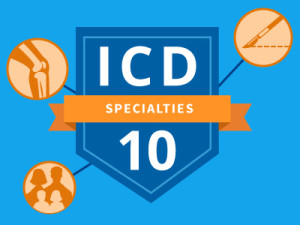 As we approach the ICD-10 transition deadline on October 1, 2014, members from all corners of the healthcare industry are busily preparing and testing for the upcoming roll out. From a technical perspective, this means that systems must be updated to accommodate transferring the new codes.
As we approach the ICD-10 transition deadline on October 1, 2014, members from all corners of the healthcare industry are busily preparing and testing for the upcoming roll out. From a technical perspective, this means that systems must be updated to accommodate transferring the new codes.
No small undertaking, this has been compared to the changes required to update legacy computer systems to be compatible with Y2K date formats. Likewise, physicians and other healthcare professionals who use these codes and have memorized their most frequently used ICD-9 codes will need become familiar with the expanded code set.
In a previous post, I indicated that there are almost five times as many ICD-10 codes compared to ICD-9. Adding to the challenge, the format of ICD-10 codes is significantly different than ICD-9, with similar diagnoses having complete different codes. On top of that, not all specialties receive equal weight — some specialties have a disproportionate number of new codes and rules. However, the switch will no doubt be an endeavor for practitioners of any specialty.
The ICD-10 superbill template published by the American Academy of Family Practice is 9 pages, up from 2 in ICD-9. In addition to more codes, the mappings from one code set to another can also be more complicated with incomplete or non-reciprocal mappings.
A recent study in the Journal of the American Medical Informatics Association suggests that the specialties that will experience the most significant impact include obstetrics, psychiatry, and emergency medicine. Specialties that deal with musculoskeletal disease and injuries will will also encounter significant challenge.
Practice Fusion aims to ease the transition process with coding tools to help you get from familiar ICD-9 codes to the appropriate ICD-10 counterpart. We also will be publishing a series of blog posts that focus on common codes for each specialty, and how they will map to the new ICD-10 codes.
Differences between ICD-9 codes and ICD-10 codes:
| Comparison of Diag Code Sets | |
| ICD-9-CM | ICD-10-CM |
| 3-5 Characters in length | 3-7 Characters in length |
| First character may be alpha or numeric, characters 2-5 are numeric | Character 1 is alpha; Characters 2 and 3 are numeric; characters 4-7 are alpha or numeric |
| Less specificity | Greater specificity |
| Laterality not specified | Laterality specified (e.g. left versus right) |
| Limited space for new codes | Flexibility to add new codes |
| ICD-10-CM Code Structure |
| Characters 1 through 3 – Category |
| Characters 4 through 6 – Etiology, anatomic site, severity, or other clinical detail |
| Character 7 – Extension |
| ICD-10-CM Code Detail |
| S52 Fracture of the forearm |
| S52.3 Fracture of the shaft of the radius |
| S52.32 Transverse fracture of the shaft of the radius |
| S52.321 Displaced transverse fracture of the shaft of the right radius |
| S52.321A Displaced transverse fracture of the shaft of the right radius,initial encounter for closed fracture |
——————————————————
Prepare For The Medical Coding Certification Exam Here!
Originally published on: Practice Fusion
Follow Medical Coding Pro on Twitter: www.Twitter.com/CodingPro1








This Post Has 3 Comments
Pingback: AMA Releases Updated ICD-10 Implementation Costs for Physician Practices | MedicalCodingNews.Org
Pingback: AMA Releases Updated ICD-10 Implementation Costs for Physician Practices | scrubs and suits
Pingback: CMS Launches ICD-10 Website For Small Physician Practices | MedicalCodingNews.Org
Comments are closed.